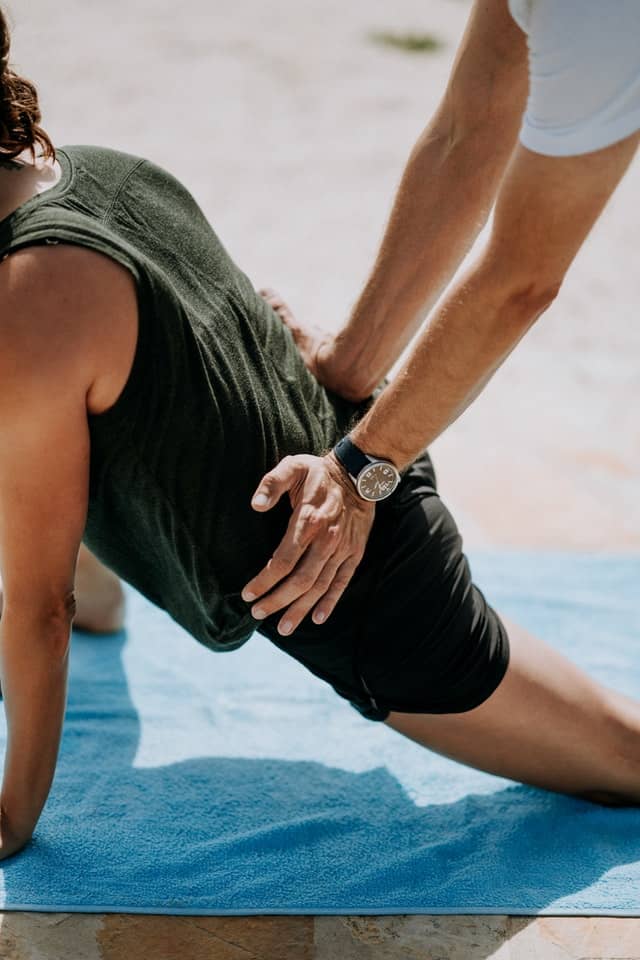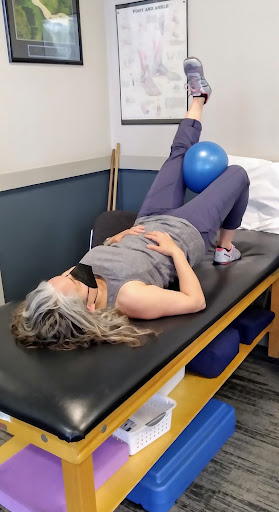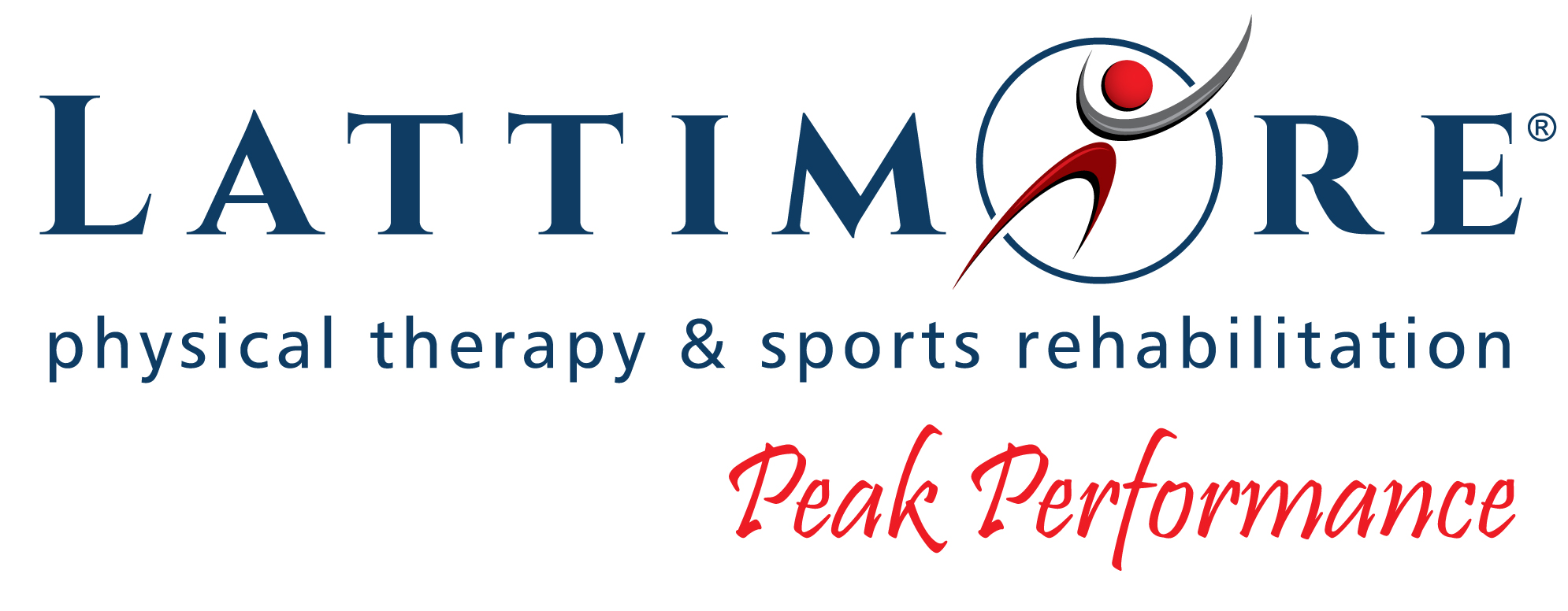The Peak Performance team are experts in hip physical therapy. Our extensive biomechanical training in Applied Functional Science © at the Gray Institute is critical in helping us understand and assess hip function so we can help those suffering from pain and limited function.
The hip is made up of the pelvis from above and the thigh bone (femur) below. While its largest movements are in the forward-backward or up-down directions (called flexion and extension) the hip has very important side-side and twisting capacity that is necessary for normal day-to-day activities and especially for recreational and sports participation. Some of the body’s largest muscles surround the hip – a key to appreciating how important this joint is to the body.
The hips are a key crossroads for the body as the junction between our upper body/trunk and our legs. Very large forces must be decelerated or absorbed by the hip, which then serves as a key body area for developing powerful movements…such as is seen not only for obvious things like lifting a heavy box from the floor, but also for things like slowing down for a change of direction on the field or for explosive motions like hitting a baseball or swinging a tennis racket.
Acute injuries can happen – sudden moments where you know something just went wrong. Those tend to be hip injuries to the cartilage rim (labrum) or to the muscle-tendons (strains) around the hip.
More chronic type pains often are the result of what we call microstresses over time or overuse injuries… smaller overloads that are usually less perceptible or imperceptible, that end up causing “wear and tear” type damage and injury. Those are often things like arthritis, tendonitis, bursitis, or femoroacetabular impingement syndrome.
No matter what the injury, hip problems can put a big dent in not only your comfort levels but your ability to live the life you want. It can mean not being able to work or play sports, to not work out, or even to be unable to do even simple daily activities like walking or climbing stairs or even moving around in bed. For some, it can produce a real fear of an inevitable feeling that the injury or pain could get worse.
If you’re spending more than just a few days or a week with some soreness or limitations that aren’t going away it makes sense to get your problem addressed. It almost always takes less time to recover, less effort on your part, and fewer costs when you get the treatments you need sooner than later!
You can read more about common hip injuries below. Whether this sounds like something you may have going on or your details seem a bit different, the team of orthopedic and sports PT experts at Peak Performance are ready to help you get back to being comfortable, capable, and confident again! Hip therapy can be a great way to avoid expensive and oftentimes unnecessary tests as well as medications, injections, and surgery.

Common Hip Injuries Helped by Physical Therapy
Much like spine care physical therapy or knee care physical therapy, receiving the right hip pain physical therapy can sometimes be the deciding factor between an active, fulfilling life unhampered by pain or mobility issues and months or years of debilitating chronic pain that keeps you from enjoying life.
Don’t settle for “maybe it’ll feel better next week” or “I just have to live with this” kind of thinking. If you have injured your hip and are experiencing pain, giving way, weakness, or even just reduced range of motion, Peak Performance can help. Below is a list of just a few of the common hip injuries we treat every single day:
- Hip bursitis. A bursa is a thin fluid-filled sac that is between different tissues to reduce friction and create padding. Two of the most commonly inflamed bursae we see are the trochanteric bursa located at the outside of your hip over the bony prominence at the top of your thigh bone (femur). The iliotibial band runs over that. Tight hip muscles, alterations in normal bony alignment, and weaknesses are a few of the potential causes of excessive loading on the bursa.
The other more commonly involved bursa is the ischial bursa, located right under your “sit bone”, the bony prominence in your buttocks that you sit on, just above where your thigh starts. Treating bursitis properly ultimately comes down to seeing an expert therapist who can evaluate the contributing factors so your treatment is focused individually for you. - Tendonitis. Tendons attach muscles to bones. The key stress areas are where those junctions occur, into the tendon and then into the bone. In the hip, there are several common areas that can develop tendonitis or eventually tendinosis (chronic tendon overload with wear and tear tissue changes).
Iliopsoas tendonitis is in the front of the hip, near the crease of the groin area where your hip and thigh meet. This hip flexor tendon is often stressed by sprinting motions. It is responsible for raising the thigh but also decelerating and controlling the thigh as the body moves forward over it. The gluteus medius tendon is located on the side of the hip. Especially as we age into our 50s-60s and beyond the tendon becomes thinner and more at risk. This muscle is an abductor of the hip, meaning its most important role is to keep the pelvis level while we stand on that leg. Prolonged wear and tear in the gluteus medius often result in weakness that causes the pelvis to drop down on the opposite side when walking.
Hamstring tendonitis/tendinosis is located at the very top of the thigh where the hamstring attaches to that “sits bone” mentioned earlier. The hamstring is really made up of three different muscles and has a number of functions. It decelerates the thigh when walking or running to prepare for ground contact and then pulls our body through to help propel us forward. It also participates strongly in controlling our trunk’s descent as we bend over to pick things up and then raise us up. It also slows knee straightening when we’re about to impact the ground but not as much force occurs in that phase. As always, a thorough biomechanical evaluation is at the heart of determining the exact nature of the injury and also any underlying factors that must be addressed to speed recovery. - Arthritis. There are a number of different types of arthritis but the most common affecting the hip is osteoarthritis (OA). This involves microstresses over time causing a wear and tear degradation of the cartilage that coats the ends of the bones in the hip joint. On standard X-rays, it will result in a thinning of the joint space noted between the bones. It’s critical to know that studies are clear that the extent of the narrowing (or arthritis severity) is NOT always proportional to the pain or dysfunction someone has. Thus, some patients may have somewhat unimpressive findings on their films and still be suffering from OA-related symptoms while others may have disconcerting looking films yet have few symptoms.
Your first concern should be about the symptoms and function you have. Remember, you are not simply the result of a film. Treating hip OA requires a thorough evaluation, including biomechanics screening of especially the spine above and the knee/ankle-foot below. Limitations at these adjacent joints especially can very directly influence the stresses your hip must endure. Expert hip therapy usually includes research-proven manual therapy techniques, along with customized exercises and oftentimes use of the Class IV laser as well. - Piriformis syndrome. This condition involves a hip rotator muscle, the piriformis, that is in the middle of the buttocks connecting the top of the thigh bone (femur) with the triangle-shaped sacrum that sits at the base of your spine. It is a muscle that decelerates the thigh/leg from rolling or collapsing inward and accelerates pushing away as in a change of direction move or swinging a baseball bat or tennis racket. Sometimes this condition can cause local buttock pain alone but it also can compress the sciatic nerve and produce symptoms down the back of the lower extremity Because of media attention on the internet patients often come in having incorrectly self-diagnosed this problem and may be prolonging recovery or worsening their actual condition because they are treating the wrong problem. A thorough evaluation will be able to differentiate the source of symptoms and contributing factors.
- Sciatica. This is a well-known term that is actually not a “diagnosis” but merely a description of symptoms, referring to pain and/or tingling down the lower extremity, which may stop at the knee but may go down the leg and even into the foot. There are many different conditions/injuries that can cause this same symptom so it is critical to have a thorough evaluation first so that treatments to the correct tissues can begin. We often see patients given generic “back stretching” programs or following internet (or friend) advice that oversimplifies treatment into stretching out what they think are tight tissues. In some cases, this is a perfect solution but too often an underlying disc irritation or injury is being exacerbated by the rounding and bending stretches given. Your back and hip expert PT at Peak Performance can help you determine the cause of your symptoms so you can be confident you’re doing the right treatments.
- Labrum tear. The labrum is a triangular-shaped cartilage rim that borders the pelvic “socket” of the hip joint, adding stability to the joint. Both acute injury along with wear and tear over time can result in labral damage. Symptoms often include sharp pains with weight-bearing activity and trouble with bending the hip or twisting. As with many conditions, including hip arthritis noted above, the sole reliance on films, such as an MRI, to guide care can be a mistake based on current research. We know that people with no symptoms can show labral damage on MRI as well. It is important for the entire clinical picture including the cause of symptoms, age, activity demands/goals, symptom severity, and various limitations noted all be taken into account. Oftentimes, even with a diagnosed tear, rehabilitation can be successful in helping patients return to normal life. In instances where surgical repair or possibly debridement (shaving away the tear) is needed then post-operative physical therapy is a key part of a successful recovery.
- Femoroacetabular impingement. Often termed FAI, this more recently understood condition involves a pinching mechanism at the hip joint caused by numerous factors, including abnormal shape and/or size of the socket (acetabulum) or the head of the thigh bone (femoral head). Excessive bony growth can occur, wear and tear to the labral, and damage to the articular cartilage covering the bone ends also are possible. Again, as noted above regarding MRI findings with labral tears, FAI findings can exist on MRI in people with no hip symptoms. This diagnosis does not immediately mean surgery is necessary but if a biomechanically based hip therapy program does not succeed then a hip arthroscopy may be required to treat the condition to resolve pain and restore function. A skilled PT program is necessary after surgery to help protect the healing tissues and optimize a return to function safely.
Do You Need Hip Physical Therapy in Rochester, NY?
Our Peak Performance hip care program starts with a deep understanding of the anatomy and biomechanics of the hip itself but very importantly also includes an assessment of its “next-door neighbors”, the spine above, and the knee/ankle-foot below.
Our Applied Functional Science © training from the Gray Institute allows us to test for key contributing factors that may have caused your hip to become overstressed by compensating for shortcomings elsewhere. Too often patients and even health care professionals have a “you’re a bad hip” sort of mindset. That results in focusing too exclusively on the hip and ignoring or mistaking which other areas actually need help. The biomechanics training we utilize allows us to identify and treat the factors that may have initiated stress onto the injured hip tissue.

One of the critical areas we often find as an underlying factor is your foot-ankle. How that foot interacts with the ground has major implications for stresses “up the chain” to the hip. Likewise, the hip joint will be overloaded when the trunk/spine are lacking proper mobility and/or strength to perform the desired task. Remember, it’s critical to find and treat the causes also and not just the symptoms, otherwise, your pains are likely to recur!
Peak Performance Can Help You Manage Hip Injuries
At Peak Performance, our expert therapists are driven by a passion to help people resolve their pain and restore their function.
Getting you back to what you love doing is what motivates us. That’s fueled by our extensive training in Applied Functional Science © that helps us identify shortcomings in other areas (often missed or neglected by traditional therapy) that either may have contributed to your hip problem or could be the cause of a slow recovery.
We’d be honored to help you get back to being you again! Call us today to get a hip evaluation and begin your road to recovery.










